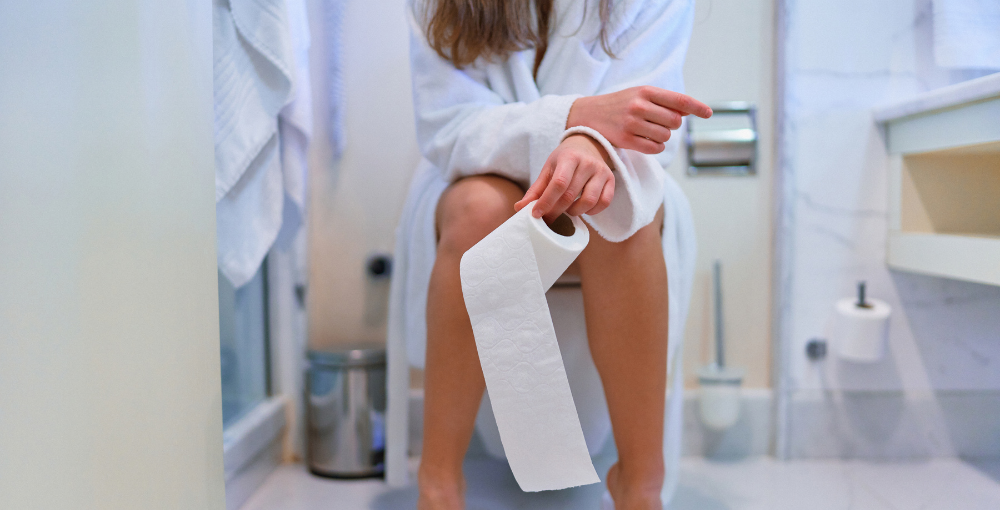Urethral Syndrome
Move Better. Live Fuller. Your Wellness Journey Starts Here.
Schedule a FREE Discovery Call!
What Is Urethral Syndrome?
Urethral syndrome is a condition characterized by irritation of the urethra, which is the tube that allows urine to leave the body. This condition is often called many other names, such as abacterial cystitis, frequency-dysuria syndrome, symptomatic abacteriuria, or urethral pain syndrome.
Its symptoms are similar to other conditions such as UTIs, but what sets urethral syndrome apart from other conditions is that it is not caused by an infection.
This condition can affect any person at any age. However, it is more common in those who were born with a vagina.

Symptoms of urethral syndrome can include:
- Burning
- Pain with urination
- Incomplete bladder emptying
- Bloody urine
- Difficulty urinating
- Painful sex
- Pain in the lower back, lower abdomen, or genitals
- Swollen testicles
- Painful ejaculation
- Discharge from the penis
- Urinary urgency
- Urinary frequency
- Pelvic pain or discomfort
Symptoms of this condition can vary from person to person. The severity of the symptoms can range from mild to severe, and they may also be intermittent. Additionally, symptoms of urethral syndrome can be worsened by other conditions of the pelvis or urinary tract. For some, this condition may be chronic and long-term—in this case, symptoms may get better with time, but most individuals will have to learn ways to manage their symptoms.
What Causes Urethral Syndrome?
Although urethral syndrome is common, its exact cause is currently unknown. As mentioned earlier, this condition is not caused by infection. It is typically diagnosed via exclusion of other conditions. However, there are some aspects thought to contribute to this condition, including:
- Hormonal imbalances
- Injury
- Narrowed urethra
- Sensitivity from previous UTIs
- Pelvic floor dysfunction
- Irritation from diet, exercises, or sexual activity
While this condition is not necessarily dangerous nor associated with severe complications, it can still significantly affect an individual’s quality of life. In addition to symptoms of pain and discomfort, this condition may contribute to stress and anxiety. Therefore, if you experience symptoms of urethral syndrome, you shouldn’t just put up with the discomfort! There are ways to better manage this condition, even long-term.
Physical Therapy for Urethral Syndrome
Treatment for urethral syndrome can vary by the individual, but your provider may recommend the use of certain pain-relieving or hormonal medications, as well as lifestyle modifications to identify or eliminate possible irritants. One other very beneficial form of treatment or management for urethral syndrome is pelvic floor physical therapy!
Physical therapy for urethral syndrome typically involves reducing irritation and pressure on the bladder, urethra, and overall pelvic area. This requires addressing pelvic floor dysfunction, which can greatly contribute to pain and other symptoms of this condition.
The pelvic floor is a group of muscles that each and every person has. These muscles support the bladder and other pelvic organs, and allow for functions such as urination, defecation, and sexual appreciation. When these muscles are tight, inflexible, weak, or uncoordinated, this is known as pelvic floor dysfunction. When dysfunction is present, it can create a variety of painful symptoms and affect urinary function.
Pelvic Floor Training
To address dysfunction, your physical therapist will work to identify and correct any imbalances of your pelvic floor through pelvic floor training and strengthening. You can expect to engage in treatment and exercises that will improve your awareness and control of these muscles, as well as encourage appropriate muscle coordination. Some common treatments used to achieve these goals include neuromuscular re-education and biofeedback.
Addressing Tension
Your provider may utilize manual therapy, exercises, stretching, or other treatments to improve the strength and flexibility of your pelvic floor muscles. For those with tight pelvic floor muscles, manual therapy and relaxation techniques can relieve muscle tension and improve function.
Improving the overall health of your pelvic floor muscles and relearning how to activate or relax them properly can help with symptoms such as incomplete bladder emptying, urinary hesitancy, or difficulty with urination. When the muscles are no longer tight, it can greatly reduce your pelvic pain, pain with urination, or other symptoms. Your treatment won’t stop there—the physical therapists at Hive Therapy and Wellness believe in comprehensive, holistic, and preventative treatment.
This means your treatment will often extend past the pelvic floor, and will improve the health of the entire pelvic region and any other related areas as necessary. The pelvic floor is closely interconnected with the pelvis, hips, lower back, and abdominals. Therefore, if these areas have muscle tension or misalignment, it is important to address those problems to prevent future complications with pelvic floor dysfunction.
Behavioral Modifications
Your physical therapist may recommend some lifestyle changes or behavioral modifications. This can mean changing fluid intake, removing bladder irritants from your diet, improving posture, and eliminating harmful restroom habits.
Pain Management
For those with a more chronic form of urethral syndrome, it may be necessary to seek out pelvic floor physical therapy as a form of long-term symptom and pain management. Hive Therapy and Wellness offers a variety of pain-relieving options, such as dry needling, cupping, tissue scraping, manual techniques, and more. Regular check-ins with your pelvic floor therapist can support good pelvic floor health and prevent worsening of your symptoms over time!
These are just a few examples of how pelvic floor therapy can manage urethral syndrome. The treatment plan that your Hive physical therapist curates for you depends on your own unique, individual symptoms. In your treatment plan, your pelvic floor therapist may utilize any of the following treatments in order to provide a comprehensive care experience:
- Neuromuscular re-education
- Manual therapy
- Exercise prescription
- Dry needling
- Cupping
- Tissue scraping
- Behavioral modifications
- Therapeutic activities
- Electrical muscle stimulation
- Spinal manipulation
- Therapeutic modalities
- Biofeedback
Urethral syndrome is a condition characterized by irritation of the urethra, which is the tube that allows urine to leave the body. This condition is often called many other names, such as abacterial cystitis, frequency-dysuria syndrome, symptomatic abacteriuria, or urethral pain syndrome.
Its symptoms are similar to other conditions such as UTIs, but what sets urethral syndrome apart from other conditions is that it is not caused by an infection. This condition can affect any person at any age. However, it is more common in those who were born with a vagina.
Symptoms of urethral syndrome can include:
- Burning
- Pain with urination
- Incomplete bladder emptying
- Bloody urine
- Difficulty urinating
- Painful sex
- Pain in the lower back, lower abdomen, or genitals
- Swollen testicles
- Painful ejaculation
- Discharge from the penis
- Urinary urgency
- Urinary frequency
- Pelvic pain or discomfort
Symptoms of this condition can vary from person to person. The severity of the symptoms can range from mild to severe, and they may also be intermittent.
Additionally, symptoms of urethral syndrome can be worsened by other conditions of the pelvis or urinary tract. For some, this condition may be chronic and long-term—in this case, symptoms may get better with time, but most individuals will have to learn ways to manage their symptoms.
Although urethral syndrome is common, its exact cause is currently unknown. As mentioned earlier, this condition is not caused by infection.
It is typically diagnosed via exclusion of other conditions. However, there are some aspects thought to contribute to this condition, including:
- Hormonal imbalances
- Injury
- Narrowed urethra
- Sensitivity from previous UTIs
- Pelvic floor dysfunction
- Irritation from diet, exercises, or sexual activity
While this condition is not necessarily dangerous nor associated with severe complications, it can still significantly affect an individual’s quality of life. In addition to symptoms of pain and discomfort, this condition may contribute to stress and anxiety.
Therefore, if you experience symptoms of urethral syndrome, you shouldn’t just put up with the discomfort! There are ways to better manage this condition, even long-term.
Treatment for urethral syndrome can vary by the individual, but your provider may recommend the use of certain pain-relieving or hormonal medications, as well as lifestyle modifications to identify or eliminate possible irritants.
One other very beneficial form of treatment or management for urethral syndrome is pelvic floor physical therapy!
Physical therapy for urethral syndrome typically involves reducing irritation and pressure on the bladder, urethra, and overall pelvic area. This requires addressing pelvic floor dysfunction, which can greatly contribute to pain and other symptoms of this condition.
The pelvic floor is a group of muscles that each and every person has. These muscles support the bladder and other pelvic organs, and allow for functions such as urination, defecation, and sexual appreciation.
When these muscles are tight, inflexible, weak, or uncoordinated, this is known as pelvic floor dysfunction. When dysfunction is present, it can create a variety of painful symptoms and affect urinary function.
Pelvic Floor Training
To address dysfunction, your physical therapist will work to identify and correct any imbalances of your pelvic floor through pelvic floor training and strengthening.
You can expect to engage in treatment and exercises that will improve your awareness and control of these muscles, as well as encourage appropriate muscle coordination. Some common treatments used to achieve these goals include neuromuscular re-education and biofeedback.
Addressing Tension
Your provider may utilize manual therapy, exercises, stretching, or other treatments to improve the strength and flexibility of your pelvic floor muscles. For those with tight pelvic floor muscles, manual therapy and relaxation techniques can relieve muscle tension and improve function.
Improving the overall health of your pelvic floor muscles and relearning how to activate or relax them properly can help with symptoms such as incomplete bladder emptying, urinary hesitancy, or difficulty with urination. When the muscles are no longer tight, it can greatly reduce your pelvic pain, pain with urination, or other symptoms.
Your treatment won’t stop there—the physical therapists at Hive Therapy and Wellness believe in comprehensive, holistic, and preventative treatment.
This means your treatment will often extend past the pelvic floor, and will improve the health of the entire pelvic region and any other related areas as necessary. The pelvic floor is closely interconnected with the pelvis, hips, lower back, and abdominals.
Therefore, if these areas have muscle tension or misalignment, it is important to address those problems to prevent future complications with pelvic floor dysfunction.
Behavioral Modifications
Your physical therapist may recommend some lifestyle changes or behavioral modifications. This can mean changing fluid intake, removing bladder irritants from your diet, improving posture, and eliminating harmful restroom habits.
Pain Management
For those with a more chronic form of urethral syndrome, it may be necessary to seek out pelvic floor physical therapy as a form of long-term symptom and pain management.
Hive Therapy and Wellness offers a variety of pain-relieving options, such as dry needling, cupping, tissue scraping, manual techniques, and more. Regular check-ins with your pelvic floor therapist can support good pelvic floor health and prevent worsening of your symptoms over time.
These are just a few examples of how pelvic floor therapy can manage urethral syndrome. The treatment plan that your Hive physical therapist curates for you depends on your own unique, individual symptoms.
In your treatment plan, your pelvic floor therapist may utilize any of the following treatments in order to provide a comprehensive care experience:
- Neuromuscular re-education
- Manual therapy
- Exercise prescription
- Dry needling
- Cupping
- Tissue scraping
- Behavioral modifications
- Therapeutic activities
- Electrical muscle stimulation
- Spinal manipulation
- Therapeutic modalities
- Biofeedback
You can learn more about these treatments on our Treatments Page.





